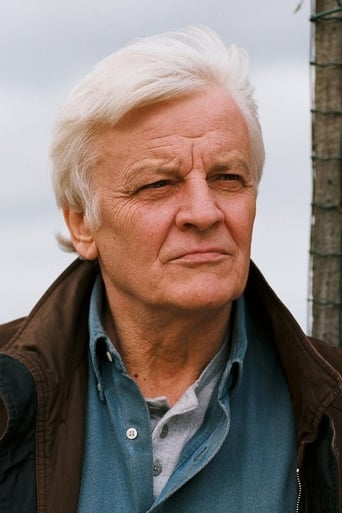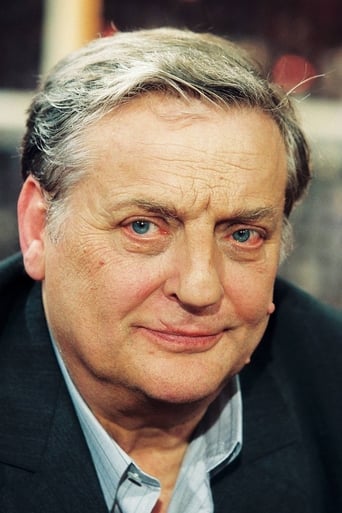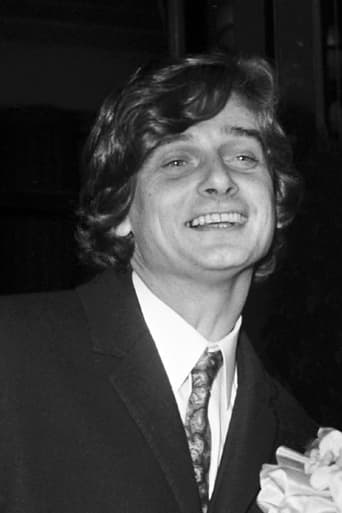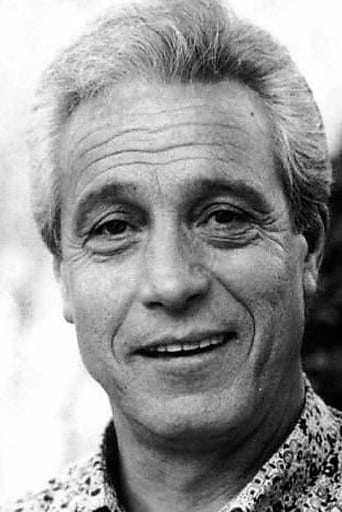Pacionsbo
Absolutely Fantastic
Freeman
This film is so real. It treats its characters with so much care and sensitivity.
Lela
The tone of this movie is interesting -- the stakes are both dramatic and high, but it's balanced with a lot of fun, tongue and cheek dialogue.
Darin
One of the film's great tricks is that, for a time, you think it will go down a rabbit hole of unrealistic glorification.
gordonl56
"La 317ème Section" The 317th Platoon – 1965 This film is probably the best film about the war in French Indo-china. Director Pierre Schoendoerffer was involved in the actual 1946-54 war as a cameraman at several of the war's battles, including the defeat at Dien Bien Phu. He shows the just what war in the dense jungle was like, dirt, rain, mud, dirt, rain, mud with firefights here and there with the Viet Cong.The film is set just before the French defeat at Dien Bien Phu. A small outpost just over the border from Cambodia has received orders to withdraw. They are to destroy the base and head south into Cambodia. They are to head for another base 100 kilometres south. The Platoon is led by the just arrived in country, Jacques Perrin. Under his command are 5 French NCO's and about 35 Cambodian troops.The senior NCO is played Bruno Cremer. Cremer, a long time veteran of the war is all for avoiding contact with the VC and hot footing it to the base in the south. He soon has a falling out with LT Perrin over how to conduct the with-drawl. As a result of a clash with pursuing Viet Cong, they now have several seriously wounded men. Cremer says they need to leave the wounded and continue in all haste away from the enemy. Fresh from Officer training school, Perrin refuses to leave the wounded behind.This of course slows the party down and soon the enemy is barking at their heels. The group splits up with Perrin and the wounded going one way while Cremer and several Cambodian soldiers attempt to lead the VC off their trail.Several days later the two parties meet further up the trail. Cremer has managed to throw the pursuers off the trail, though he knows it will not be for long. Lt Perrin has by now realized that Cremer was right about the wounded. They have all died, and they are now 2 days behind where they should be.The group starts out again, only stopping for rest, food and to try and make radio contact. The party is losing men with every clash they have with the pursuers. The soldiers finally reach the base, only to discover the VC already there. They now need to head further south to the next base and hope they can outpace the enemy.While stopping for a much needed rest. The platoon is hit hard in an ambush by a large VC group. Only 5 men, Cremer, a badly wounded Perrin and 3 Cambodian troopers make it away from the massacre. Perrin orders Cremer to leave him behind. Cremer hands him a grenade and fades into the jungle with the 3 remaining troopers.The film was shot on location in the jungles of Cambodia.Director Pierre Schoendoerffer other films include the Vietnam War films, THE ANDERSON PLATOON and DIEN BIEN PHU. He also wrote the WW2 novel, FAREWELL TO THE KING which was made into the film of the same title. This one stars Nick Nolte and is set in the jungles of Borneo.
Theo Robertson
It has become very fashionable amongst uninformed opinion to mock the French military heritage . John A Nagi's best selling book Learning To Eat Soup With A Knife is a modern day bible of counter-insurgency warfare and chronicles the differences between America's failed conflict in Vietnam and Britain's spectacularly successful conflict against communist terrorists in Malaya in the 1950s . One of the major keys to British success was developing a French strategy learned in the Indo-China war of the ink spot strategy , a military counter-insurgency technique America dismissively ignored in Vietnam . That said there's different factors in winning and losing wars and when the British tried the Ink Spot strategy in Helmand province Afghanistan it was next to useless . Likewise the final outcome of the French Indo-China war was defeat for the colonial French after the pitched battle of Dien Bien Phu . But let it never be said that a bloody defeat requires less courage than a bloody victory and 317TH PLATOON tells of a bloody French defeat I came in to this film knowing absolutely nothing about it except was directed and written by Pierre Schoendoerffer who was present at the battle of Dien Bien Phu as a cameraman and in 1992 made the epic war film featuring the battle . In short what Schoenddoerffer doesn't know about the French Indo-China war isn't worth knowing and expected him to translate this to screen I was not disappointed . I've never seen a war but do know about the hot humid hell of monsoon in Asia and the director translates this very well to the audience where cloths are never dry and no matter how much liquid is consumed a thirst is never satisfied . Leeches and insects are always a problem and if a man suffers a small wound infection leading to gangrene is a threat . In this part of the world it's not only the enemy a White European has to fight but also the environment itself This helps to give a very real sense of time and place to the story that plotwise is very familiar to war film aficionados . The story itself is very simple of a platoon stuck behind enemy lines and having to fight their way to sanctuary . It does contain a very European film making style , one of cinema verite , of naturalistic light and sound recording and of choppy editing giving the audience a slightly disorientated feel but this in keeping with the film . If you're expecting the expressionistic nightmare of APOCAYLPSE NOW or the emotional roller-coaster of PLATOON then you'll be disappointed because that's not what 317TH PLATOON is trying to be but in its own way it's as effective as any Hollywood 'Nam epicA couple of things don't work . One is the audience might have to know the background of the conflict in order to understand why the platoon seemingly become stuck 150kilometres behind enemy lines . Another plot point is why the platoon have to open fire and give away their position to a passing Vietminh battalion when they could have laid low and bypassed it but these are minor flaws in a film that deserves to be better known about a counter-insurgency conflict that is totally forgotten . With Afghanistan being in the headlines for twelve years it might be a good idea to remember the quote from Marx that " History repeats itself first as tragedy , secondly as farce "
DICK STEEL
The National Museum of Singapore Cinematheque continues in its provision of specially curated film programme with a special focus of Asia being seen through French cinema, with screenings and talks being organized around the theme, which you can find out more about at their website here. The 317th Platoon piqued my interest for being a war film made by filmmakers who have actually walked the talk and experiencing the conflict themselves, and you can just about trust director Pierre Schoendoerffer and renowned French cinematographer Raoul Coutard to bring about a film of cinematic quality even when dealing with what I deem as a taboo subject for French filmmakers, since the era of the French- Vietnam war in the 50s is something rarely seen put on film, with this being an exception, and a stunning one at that.And with screenings at the Cinematheque you can just about trust the programmers to hunt down the perfect version of the film to be put on screen, this being the restored film by La Cinematheque francaise and by StudioCanal in collaboration with The Franco-American Cultural Fund, cleaned up from its pops, cackles and whistles to bring about an exceptionally beautiful presentation that does justice to Coutard's cinematography, one that is restored with the assistance of the filmmakers themselves, in a process detailed at the beginning before the opening credits. Filmed in Cambodia with help extended by Prince Norodom Sihanouk, it brings about one of the best war stories ever told in the extended Vietnam War from the French point of view, which is rare in itself, and sucker punches its peers, especially those done by Hollywood, set around the same era.Told in a day by day account, we follow the titular platoon who got ordered to abandon their fortified position in order to retreat southwards, but little do they know that once out of their comfort zone, they're plunged right into warfare with the enemy Vietminh soldiers hot on their heels, turning into a cat and mouse pursuit of trying to gain the upperhand against the enemy rather than to constantly be on the run. It's the time where the winds of change in Indochina see the Viet Minh soldiers relentlessly pushing the French troops from their soil, even urging their brothers on the side of the French to mutiny and betray their Caucasian commanders, who are headed by quite the inept military commander lacking savvies of warfare.Its portrayal of war is something that only those who have gone through warfare or at least some basic military training will be able to ascertain how accurate things got portrayed, from the fullpack inspection (which uncovered a tied up piglet!) to how commanders aren't sometimes the most experienced or smart on the battlefield, with the warrant officers, specialists and men, in this case, the locals, being shown to have more courage, loyalty and all round shrewdness in fighting an non-fightable war given being grossly outnumbered to begin with. Many situations put on screen undoubtedly come from the director Pierre Schoendoerffer having witnessed how it's conducted and having their fair share of experiences on the battlefield, and this helped to translate authenticity to the movie despite having to shoot in very harsh environments.In black and white which contributed to its very stark, gritty and no nonsense imagery to war and its horrors, The 317th Platoon also takes a look at warfare itself and how it impacts the most immediate soldiers who have to partake in it, following orders to a T in order to survive as a group. Quintessential war film themes like courage and camaraderie also feature prominently, with Coutard's cinematography putting the audience into the thick of the action as if one of the troops listening to orders, and executing combat movement with the rest.If you'd think Oliver Stone's Platoon, Brian De Palma's Casualties of War and Randall Wallace's We Were Soldiers are some of the best about the Vietnam War put on film, then you surely must get your hands on this to have a go at what would be a presentation outside of Hollywood, and a Franch one at that which served as the pre-cursor of events to everything else aforementioned. Recommended!
Rave-Reviewer
In 1954 Vietnam, at the time of Diên Biên Phu, a French unit on patrol under the command of an inexperienced lieutenant is gradually depleted by Vietminh until only an ex-Wehrmacht Alsatian adjutant remains. He is to die, a title informs us, in Algeria in 1960.Semi-documentary in style, this is an effectively low-key appraisal of the difficult choices with which war confronts its soldiers. As so often in Vietnam films the enemy is only glimpsed from a distance, the camera remaining a disembodied observer among the group. Bertrand Tavernier acted as co-writer on the film.



